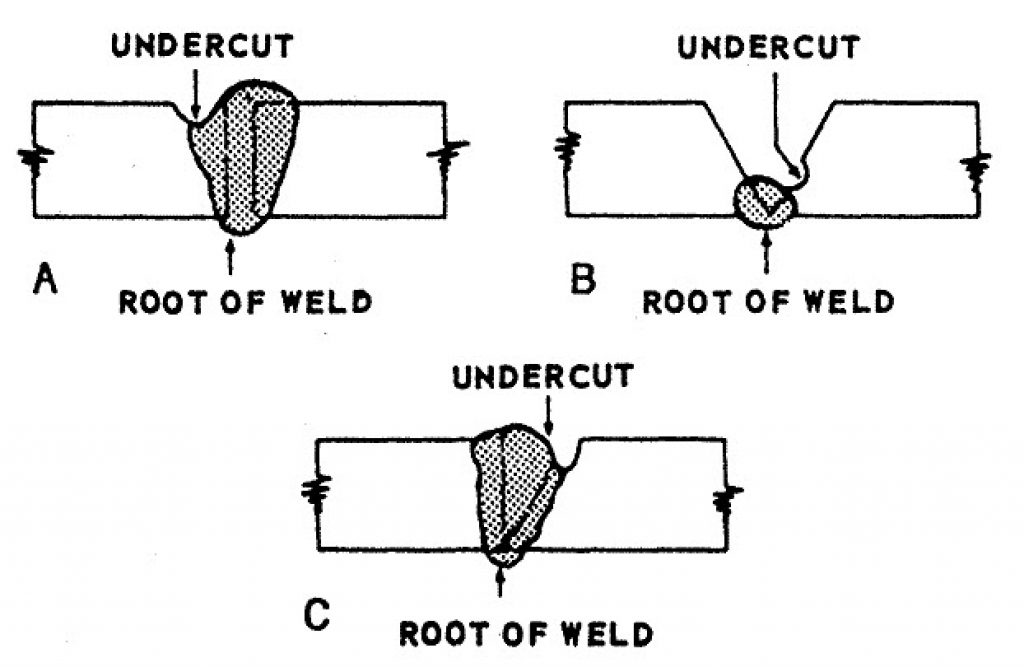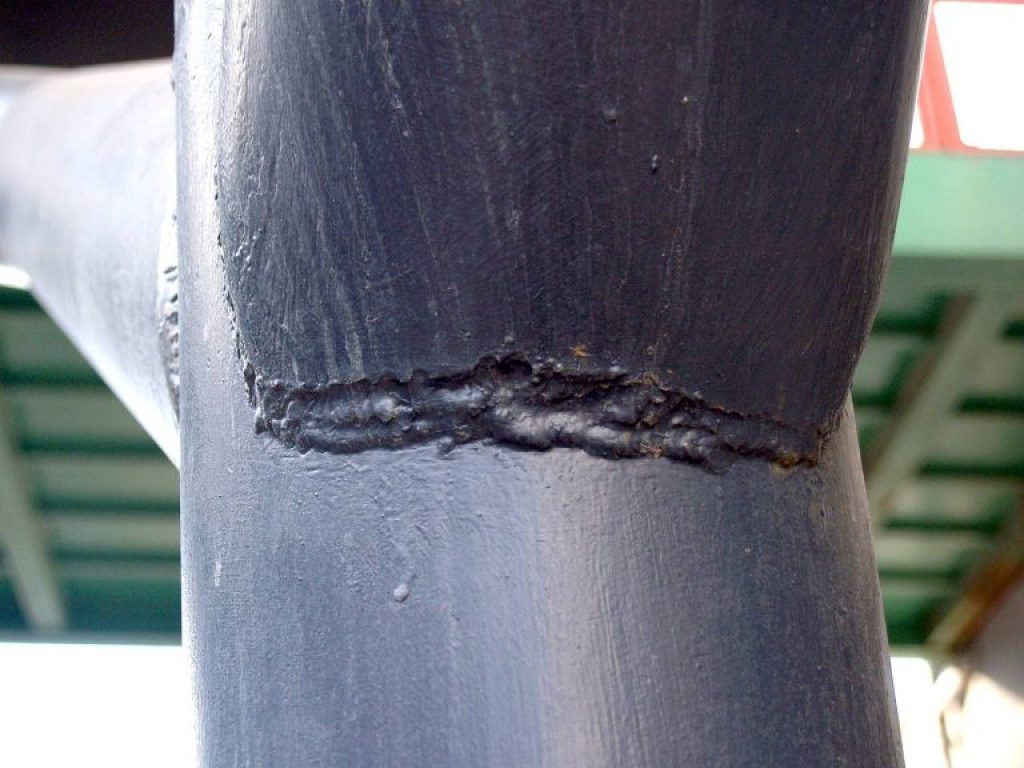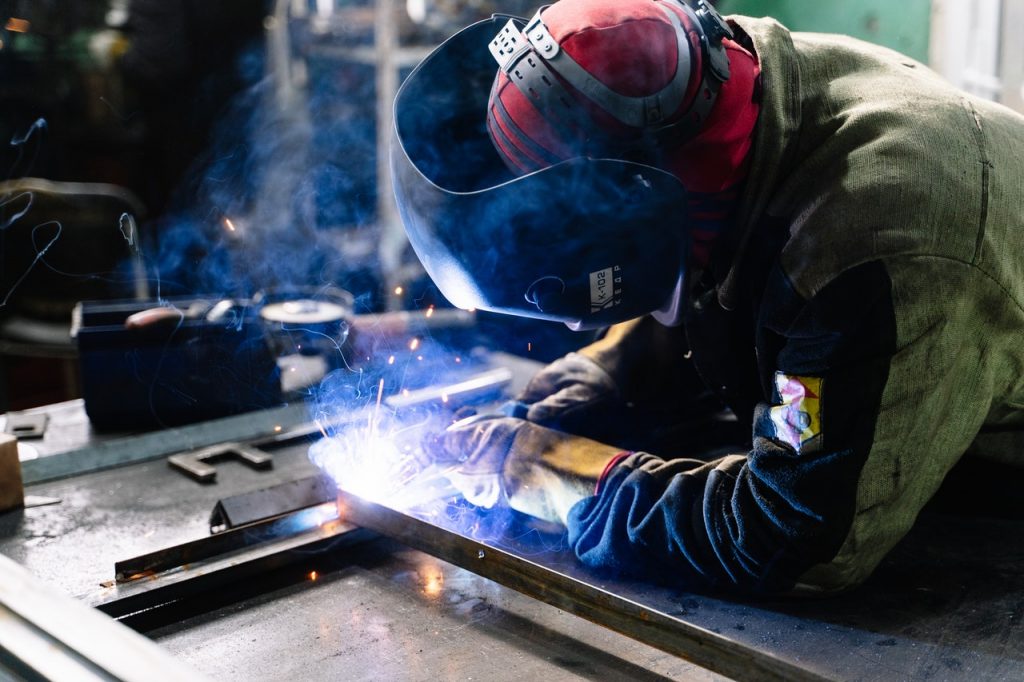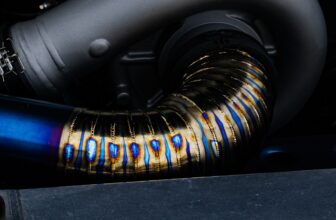Welders come across undercuts, when trying to achieve superior welds. It is a very important for professional welders to understand welding undercuts. In this blog post, we will discuss undercutting in welding, its causes of it, and how to avoid undercuts in welding. We will also provide some tips on how to avoid common mistakes made by welders.
What is a welding undercut?

One of the most typical welders’ issues is undercutting. The base metal near the toe or root of the weld takes on a groove known as undercutting. When the weld metal does not fill in the grooved area, it is known as undercutting. This leads to a weak weld with potential fractures along the toes of the weld.
Undercutting is frequently detrimental to the weld’s strength as well as the workpieces. It is typical and expensive. It leads to a loss of production and efficiency.
This is a problem that even the best welder may inadvertently create. There are several tactics for welders to get rid of welding flaws and return to work as quickly as possible.
What does undercut weld look like

What causes undercutting in welding
Undercutting is the most important adversary for welders. It reduces welding quality, and in some cases, leads to money and waste of material.
So, since we’ve shown that undercutting is harmful to welds, what are some of the most common causes?
Welding too fast
The quality of the weld is very much determined by the speed and direction of movement of the welding electrode. If you move too fast across the weld, the final product will have numerous weak and unfinished metal fusion sites. This deficient result is due to the near-zero thickness of the molten metal in the connection region.
When the molten metal solidifies too quickly, it forms a hollow along the welds’ edges. You may also need to use a pedal or hand pump to assist you during welding. You should try to weld at a medium rate since slow welding seldom results in success.
Using excessive temperature to weld
Using excessively high heat is frequently a leading reason for undercutting. When a high current causes significant heat, it quickly enters the weld area and solidification rapidly follows.
Rapid solidification, on the other hand, encourages rapid curing, resulting in an undercut. In addition, slow cooling would ensure a proper metal cure and full fusion. On the other side of the spectrum, quick solidification promotes a fast cure which leads to an undercut.
When you’re welding thin metals, it’s typical for the majority of the metal to be melted. It’s critical to keep an eye on the weld current and make sure it isn’t too high; otherwise, a fast arc pace will be required. When you get to thinner and free edges, it’s a good idea to check your welding temperature.
Poor welding technique – no weaving
Welding may be done using several processes, including multi-pass and weaving. Weaving is a technique in which the electrode is moved from side to side as the beads form. It guarantees equal heating, resulting in uniform curing around the weld zone.
Weaving aids in the regulation of heat within a weld puddle; remember to pause each of the sides of the welds to avoid undercutting. When you spin too fast, this can lead to undercutting. Hold the duct securely at the groove’s sill if you’re employing a weaving technique.
You should also avoid working on unclean surfaces since they might cause fusion insufficiency. Before and after welding, make it a point to clean your weld surfaces thoroughly.
Large arc length
Arc is the distance between the weld’s tip and the surface of the electrode. Remember, there are four basic welding postures: horizontal, vertical, flat, and overhead.
These factors have an impact on arc length variation. A large arc length creates more liquid metal than necessary, resulting in an undercut. Nonetheless, arc length variation is usually necessary for big welding projects. As a result, make sure the length meets your project’s standards. The average arc length is roughly the same as the core wire of the electrode’s electrode.
Wrong electrode size
Electrodes come in a variety of sizes and shapes. If you choose a large one, the amount of molten metal generated increases, resulting in the undercut. If the electrode is too tiny, much less molten metal will be deposited on the surface, resulting in surface flaws.
Find the right welding electrode in our article
Incorrect welding angle
When performing welds, it’s critical to understand the appropriate welding angles to avoid errors. If heat is applied to free edges at incorrect angles, an undercut will result.
For general welding, the holding angle should be between 30 and 45 degrees.
Wrong welding position
When you weld vertically or horizontally, you must be a lot more cautious. Welding in the incorrect location is quite common, which leads to insufficient metal fillings on the connecting edges and an undercut.
Flat welding helps prevent undercutting, especially if you’re workin on bigger welding projects.
Contaminated shielding gas
Shielding gas is used in protecting molten metal from chemical penetrations. Gases like oxygen, nitrogen, and hydrogen are potential agents that can infiltrate the process, eventually minimizing porosity.
The appropriate composition should be based on material type, quality, and thickness. For example, when carbon steel welding, the proper outcomes can be achieved using carbon dioxide with inert gases. Increasing the shielding gas flow in your regulator is advised to minimize the chance of creating undercuts.
Need help identifying and selecting the right welding gas? We have an article covering just that
Repairing a welding undercut
It is not simple to repair a raised tooth; nevertheless, fixing it isn’t difficult. You must consider things like the length of the undercut. A stringer bead (complete length) of the weld’s undercut is placed.
Otherwise, you can use a metal grinder to combine the undercut with a custom weld profile.
If the undercut is less than 0.5mm in width, it’s most likely not worth repairing. Undercuts will go unnoticed if they are only 1mm deep, as long as the steel is low-carbon.

How to prevent and fix undercut in welding
Let’s take a look at some remedies now that you know what undercutting is and how it leads to serious welding flaws. As a welder, make an effort to avoid undercuts by following established best practices and expert advice.
The following preventative measures may be used to minimize the likelihood of developing welding undercuts.
Hold the electrode at 30-45 Degrees
For optimum performance, the angle of the electrode should be between 30 and 45 degrees to the horizontal surface.
This would be the optimum angle for the molten metal to flow smoothly and evenly. It’s also feasible to balance motions at this angle rather than vertically.
Have a balanced travel speed
The effectiveness of molten metal deposition is determined by the angle of tilt of the electrode. You should make certain that the electrode’s movement is neither too fast nor too sluggish. A balanced pace is very advantageous to the weld’s quality.
As a pro welder, you should be able to swiftly change the speeds based on the sort of joints being welded. In thicker sections, go slower to allow for greater deposition and a gradual cure.
When you’re dealing with thin sections, move a little quicker to apply only the appropriate quantity of material.
Use a stable platform to weld
The molten metal is uniformly distributed throughout the welding, resulting in excellent fusion, when using a stable platform. Use a sturdy foundation to support the base material and the welding torch.
This means a flat and stable bench should be used as the surface. Furthermore, to guarantee top welding, you should always use clamps to secure the workpiece and assist in the welding process.
Check and adjust the voltage and current regularly
You should know that you should be regulating the voltage or current when welding different materials.
As a reminder, welders are often used to weld stainless steel and mild steel because these materials require distinct amounts of power. The type of electrode, as well as other materials involved in the procedure, would also vary.
To operate effectively, you must automate current and voltage control while working. This would guarantee that you give your full attention to the task at hand.
Use the Correct electrode size and type
Electrodes come in different sizes. The right one should be chosen based on the parent material’s characteristics.
When welding stainless steel, for example, you would be using a different electrode size compared to lets say welding mild steel
Reach a lower arc length
The amount of molten metal deposited is determined by the arc length. To ensure that adequate material is deposited, lower the arc length at thick sections.
The arc’s length should not exceed the metal part of the electrode’s diameter as a general rule. Arc length variation, like other welding jobs, requires practice.
Use Pure Shielding Gas
Shielding gas without impurities ensures that the weld quality is not harmed. However, keep an eye out for slag and porous welds, which can lead to weak spots and undercutting.
Ensure that you consult with your local welding standards inspector if you’re unsure about the proper shielding gas to use.
Clean Metal Surface
You should clean the surface before welding it to ensure that there is no dust, rust, or dampness. The surface must be clean to ensure a high-quality weld. Use anti-rust sprays and a wire brush to clean rusted surfaces.
Appropriate Welding Technique
Be sure to stop at the edges to avoid melting the core material, when using the weaving technique. Weaving speed should also be improved; too slow or quick can have a negative impact on the weld quality.
Thin sections, in particular, since they are frequently difficult to manage. Concentrate on the welded region, especially on areas with little thickness.
Use the Multi-Run Welding Technique
The multi-run weld method help to reduce the undercuts and lower segments during welding by using multiple runs. This technique allows you to make excellent resources as well as enhance the mechanical qualities.
Conclusion to undercutting in welding
Over time, undercut repairs may be difficult to perform and overcome, and some of them might have long-term effects and impede welding projects’ success.
Welding is a crucial process that should be taken seriously to avoid any welding problems, such as undercuts. Following the proper welding techniques can help prevent welding issues.
If you’re new to welding or are still having trouble with undercuts, don’t hesitate to ask for help from an experienced welder or welding instructor. With a little practice, welding undercuts will become easier to avoid.







